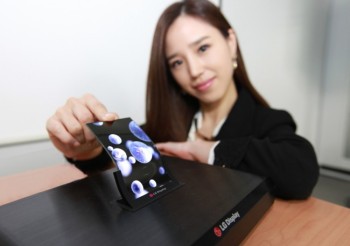
LG officially ready to mass-produce first flexible displays, but don’t count on flexible smartphones
LG has formally announced that they are first to the table with another bit of innovation in the area of mobile displays. After long being rumored to be working on flexible displays, LG Display can now claim that they are first to market with the ability to mass produce the technology (which is of the OLED variety).
We’d previously heard we’d be seeing devices with flexible displays at some point next year, and it looks like that prediction is indeed coming true. The rumored LG G Flex is said to be first out of the starting gate. But what does this mean? Will it allow us to get flexible smartphones?
No, not quite. You’d need a flexible battery, a flexible motherboard with flexible components, and a flexible chassis to get that, something we don’t see happening for a very long time. Instead, a flexible display will make a device’s display virtually impossible to break, and will also be useful for OEMs who want to introduce new curved designs in their latest products.
Of course, the glass covering the display is still susceptible to shattering in the event of a drop, but it’s much easier and cheaper to replace a sheet of glass than it is an entire display. Here’s LG’s technical briefing on the achievement:
LG Display’s flexible OLED panel is built on plastic substrates instead of glass. By applying film-type encapsulation technology and attaching the protection film to the back of the panel, LG Display made the panel bendable and unbreakable. The new display is vertically concave from top to bottom with a radius of 700mm, opening up a world of design innovations in the smartphone market. And only 0.44mm thin, LG Display’s flexible OLED panel is the world’s slimmest among existing mobile device panels. What’s more, it is also the world’s lightest, weighing a mere 7.2g even with a 6-inch screen, the largest among current smartphone OLED displays.
That means it should help smartphones and tablets become even thinner and lighter than they already are. While we obviously can’t judge the visual quality of these displays yet, we’ll use LG’s good track record in the display industry to declare that there probably isn’t anything to worry about. We’ll have to wait a bit more time to see which device will have the honors of being the first to the finish line with this technology in place.